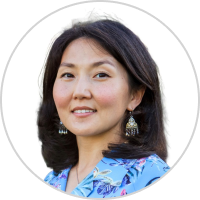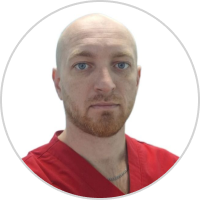Specialists
Years of experience in genetics, laboratory diagnostics and bioinformatics

The DNA molecule is the carrier of genetic information in almost all living organisms. It is made up of two complementary, i.e. corresponding strands of nucleotides that form a unique sequence.
A pair of complementary nucleotides within a DNA sequence is also called a base pair, abbreviated as bp.
The human genome contains about 3 billion base pairs.
Sanger sequencing is one of the classic sequencing methods. The method was developed in 1977 by Frederick Sanger and his colleagues. It was used by the Human Genome Project in 1990-2003 to fully decode the human genome for the first time.
Sanger sequencing is still relevant today and is a routine method both in genetic diagnosis and in research practice. It can be used to ’read’ sequences of up to 1000 base pairs in a single cycle with a high accuracy of up to 99%.
The Sanger sequencing method is now fully automated. Automation makes it reliable and easy to perform, and it is the ’gold standard’ of modern sequencing. With automation and increased sequencing capacity, the cost of the method has also decreased.
The Sanger sequencing method is based on the use of dideoxynucleotides, also known as «terminator» nucleotides.
In a test tube, a DNA synthesis reaction is carried out using an already existing matrix (the single-stranded genetic sequence of a particular individual), the sequence of which needs to be sequenced.
The DNA molecule is synthesised by the DNA polymerase enzyme, which, according to the matrix, inserts nucleotides one by one into the growing chain.
Among all the nucleotides, there is 1% of «terminators», each of which also carries a special fluorescent tag.
Once such nucleotides are incorporated, further chain synthesis becomes impossible. Since the insertion of a labelled «terminator» nucleotide into a growing DNA strand is a random event, it is equally likely to occur either at the beginning or after most of the complementary molecule has been synthesised.
As a result, a mixture of unique DNA fragments of different lengths is formed, which begin the same way, but end at different positions along the DNA strand matrix. And they end at one of four nucleotide tags.
These fragments are then separated by size using capillary electrophoresis.
The synthesised DNA fragments are separated by the electric field: the smaller the fragment, the faster it moves in the gel.
This way the fragments «line up» along the length in the capillary.
A fluorescent nucleotide at the end of each fragment is detected and the complete nucleotide sequence of the DNA sample examined is determined.
Since the invention of Sanger sequencing, the search and development of alternative methods of DNA sequencing has continued. Recently, Next Generation Sequencing (NGS) methods have become very popular. However, each technology has its own characteristics and the choice of method is usually based on the task at hand.
Allow to obtain data on longer DNA sequences (up to whole genome sequencing) and detect variants (mutations) contained in about 5% of the studied DNA. However, this is done by simultaneously reading a large number of short (100-300 bp on average for the methods most commonly used in clinical laboratories) DNA sequences, which are then combined and analysed.
Years of experience in genetics, laboratory diagnostics and bioinformatics
All data is strictly confidential and cannot be passed on to third parties
Results ready in a short time
Extensive control at each stage of testing
Free delivery of biomaterial across Russia
Email info@f-genetics.com for information

Шикеева Амуланг Алексеевна
Врач-генетик, лабораторный генетик Лаборатории First Genetics, к.м.н.

Филатов Павел Николаевич
Врач-онколог, химиотерапевт высшей категории, хирург ГАУЗ «ООКСЦТО» Действительный член Российского общества клинической онкологии (RUSSCO), Ассоциации онкологов России (АОР), профессионального сообщества Меланома Про.